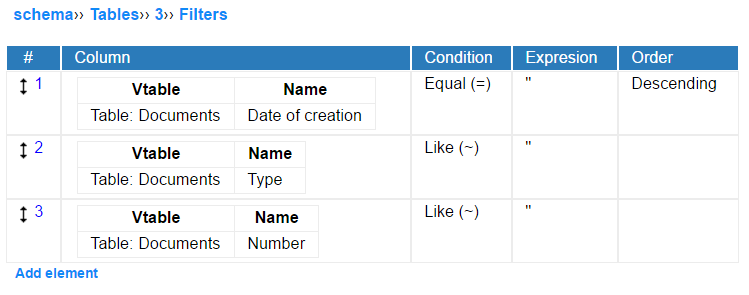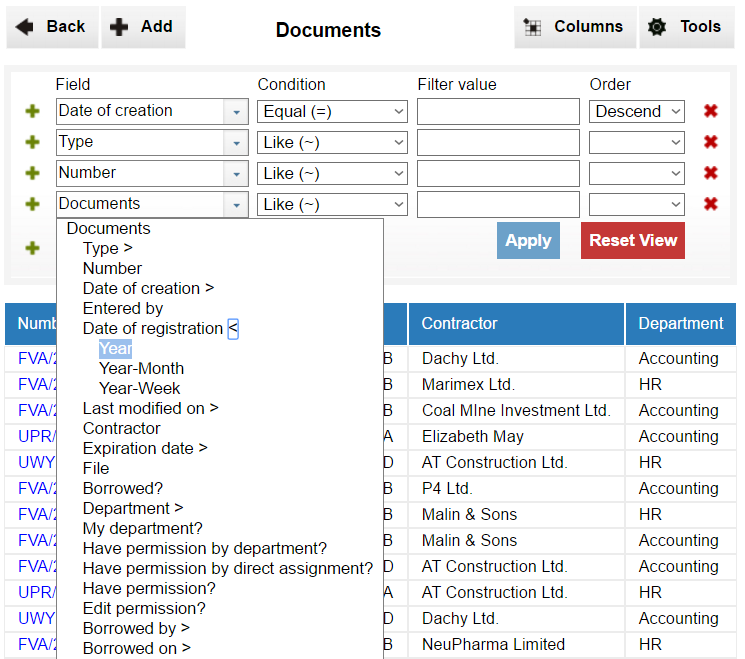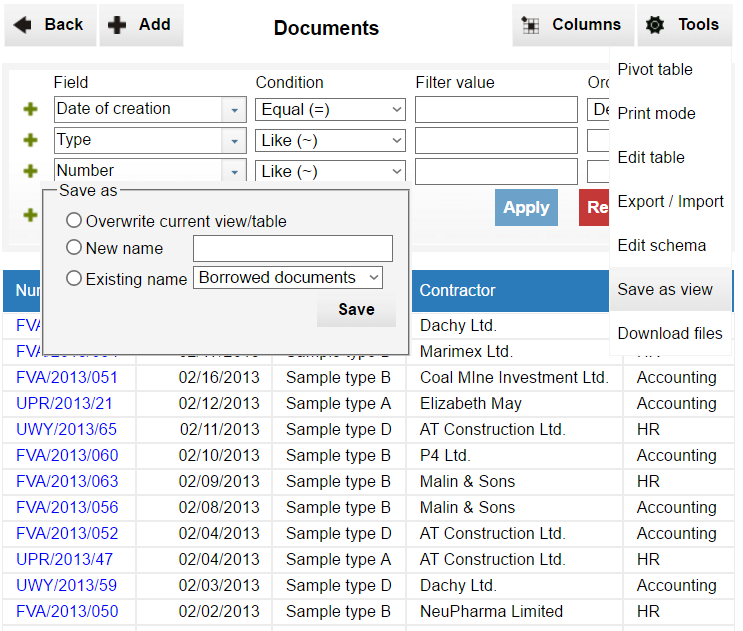Filters
Filters are basic mechanism for data searching. They are used also in views and pivot tables.
There are two types of filters: standard and fixed. This section describes the first ones.
If you are looking for information how to use filters in tables and views, check this tutorial.
Default
If an admin didn't set any permanent modification, the number of filters present on table screen is equal to the number of main columns (described here. By default there is one "Like" filter for every main column.
Every modification in this section of schema overwrite this setting.

Temporary modifications
Every user can temporarily change the defined filters using filters interface. Such change modify the set of displayed records.
The view is defined per user and can be restored to the default by clicking the "Reset View" button.

Permanent modifications
An administrator of a database can overwrite the default filters for all users by modifying the filters section of the Schema Editor. The Filters will be displayed in the given order. To change it, click at the tiny arrow (↕) on the left side of "#" column (this will cause the change of all the other arrow in the schema) and then click once again at the position, where you want to move (point ↑ or ↓ arrow).
Alternatively it is possible to save temporary modification defined in the filters interface. This option is available for an administrator only and is located in the "Tools" menu as "Save as view" option.
Selecting this option opens a popup window, which let you do the following:
-
Overwrite current view/table - the currently applied filters will be written to the filters section of the schema.
-
New name - this create a new view with the given name and selected set of filters.
-
Existing name - overwrite filters of the selected view.
Note that using "Save as view" tool will also save current visible columns setting!
Setting the filters in the schema editor has one important advantage. They let to use results of expressions as the filters value. That let for more flexible filtering. For example you can set a filter containing the current date as a value.
